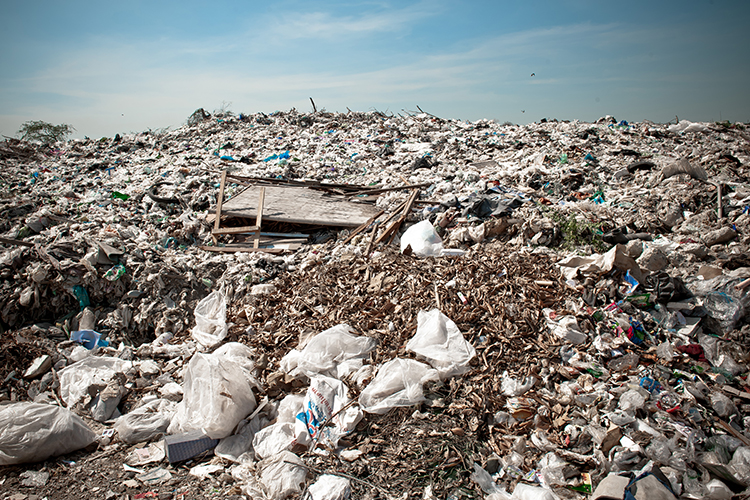 Beginning next summer, landfill-bound garbage trucks in Massachusetts might smell a little less putrid than usual, thanks to a new regulation that would prohibit any generator of more than a ton of food scraps per week from hauling those scraps to the dump. As the state finally gets serious about diverting food waste, it expects to be sending much of it elsewhere: to hungry people, animal-feed producers, commercial composters, and the high-tech contraptions known as anaerobic digesters, which convert waste to energy and fertilizer.
Beginning next summer, landfill-bound garbage trucks in Massachusetts might smell a little less putrid than usual, thanks to a new regulation that would prohibit any generator of more than a ton of food scraps per week from hauling those scraps to the dump. As the state finally gets serious about diverting food waste, it expects to be sending much of it elsewhere: to hungry people, animal-feed producers, commercial composters, and the high-tech contraptions known as anaerobic digesters, which convert waste to energy and fertilizer.
With the passage of the new regulation, Massachusetts will join its neighbors Vermont and Connecticut in requiring that large amounts of organic waste go somewhere other than landfills. (New York City mayor Michael Bloomberg has expressed his wish to enact a similar requirement before he leaves office at the beginning of next year.) Should these regulations have their intended effect, the Northeast will likely see a major surge in the technology of anaerobic digestion (AD).
The AD process starts when organic material is dumped into an enclosed tank and seeded with hungry bacteria. As microbes devour this nutrient-rich material, they produce sugars, fatty acids, and amino acids. Successive waves of bacteria then convert these products into carbon dioxide, hydrogen, ammonia, organic acids, and methane. The biogases generated by the process can be captured and used to produce fuel, electricity, and heat; left behind are crumbly dregs known as digestate, which has some value as fertilizer.
Across the United States, nearly 200 farms and a handful of industrial food-service operators already use small AD systems to turn slurries of animal waste or food scraps into power. Wastewater treatment plants, of course, have long enlisted microbes to digest the organic solids in human sewage, but increasingly they have been using AD technology to generate their own energy and offset electricity costs. To further boost power production, plants with excess digester capacity are starting to chase food scraps—which generate 10 to 35 times more gas than does animal or human waste.
“This is a great opportunity for economic growth,” says Patrick Serfass, executive director of the American Biogas Council. “We can recycle the organic waste that makes up 20 to 40 percent of our garbage and turn it into renewable energy.” Digesting 50 percent of the food Americans waste, says the Environmental Protection Agency, would generate enough electricity to power 2.5 million homes.
Some worry that government subsidies could create an oversize AD industry with an insatiable appetite for food. Already there is concern in the European Union, where subsidies are a powerful incentive, about the possibility that crops will be grown solely for AD purposes. Others caution that centralized industrial digestion could undermine community composting operations, which not only produce valuable fertilizer for local gardeners and landscapers but also “foster community engagement and commitment to sustainable practices,” according to David Buckel, a New York–based community composting consultant. “We need both scales. But we should do as much local composting as possible.”
However the options shake out, it’s clear that the days of long-hauling massive amounts of methane-generating organics to landfills are numbered. Let the food fight—over the energy and nutrients stored in peanut shells and potato peels—begin.

